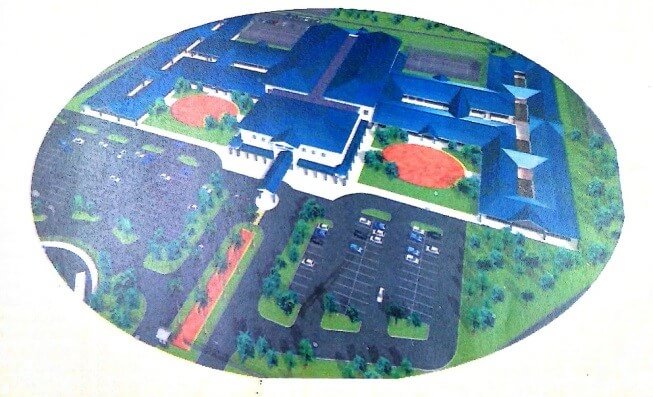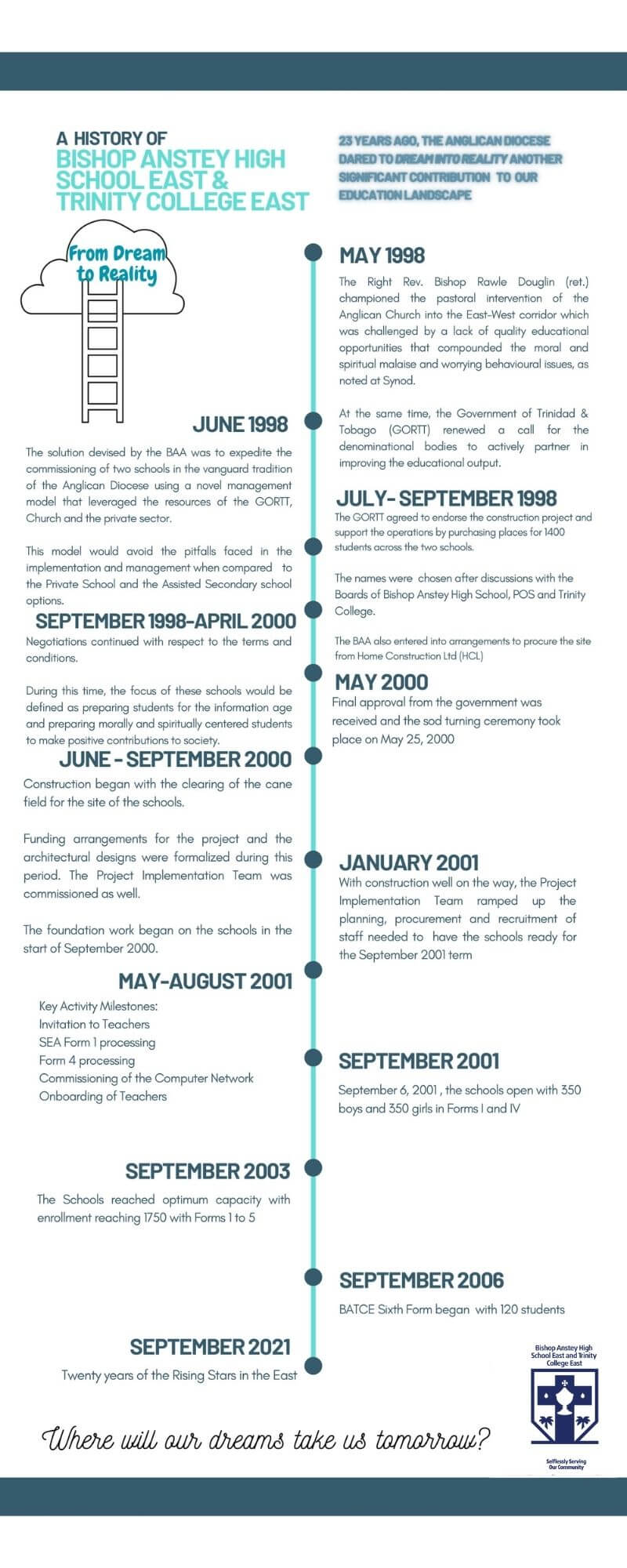History of the Schools
At the Anglican Synod in 1998, the Education Cluster identified the urgent need for action in respect of: the inability of Anglican students along the East/West corridor to obtain appropriate secondary education; moral and spiritual malaise; unacceptable behavior and poor academic performance of a significant number of secondary students.
At the same time, the Prime Minister The Honourable Basdeo Panday challenged denominational bodies to join with Government in finding solutions to the problems evident in the education system. The idea was to resume their traditional role in education and develop alternative education financing mechanisms.
As the body responsible for Anglican secondary education management, The Bishop Anstey Association (BAA) took up the challenge. Consultations were held with the Diocesan Council, the Ministry of Education, educators, BAHS & Trinity College Boards to obtain input, buy-in and approval.
On June 24, 1998 the BAA approved the project definition and obtained Diocesan approval within the following key parameters:
• number of schools, size, location
• branding / naming the schools with the intention of maintaining the standards of Bishop Arthur Anstey to deliver high quality secondary education
• objectives
• funding mechanism
• execution of project
Out of the consultations and project approval, the Bishop Anstey Association fostered an agreement with the Government of Trinidad and Tobago to construct a model secondary school with the aim of providing innovative education and preparing students for a technologically advanced world of work.
A further agreement was formed between the BAA and Home Construction Limited to create a joint venture company, Trincity College Limited (TRINCOL), to develop the two schools Bishop Anstey High School East and Trinity College East.
Initially, on September 17 1998, the agreement stated that the Government would pay for one thousand, five hundred and seventy five (1,575) places, but later in 2004, the government paid for all one thousand, seven hundred and fifty (1,750) places for students.
The project was defined as the design, financing, construction and management of two new schools on a self-financing basis – Bishop Anstey High School East and Trinity College East – with an optimum enrolment capacity of 875 students each.
The BAA Agreement also outlined the details of design that the institution would reflect. It was agreed that the institution should be modeled after the ‘Canadian Smart School Model’ where both schools would exist on one campus and mirror each-other whilst also being separate entities, interdependent on the administrative level.
The facilities section of the agreement outlined the development of:
• Classrooms
• State of the art Science and Computer Laboratories
• State of the art multipurpose sporting facilities
• An on-site chapel
• A Library with a comprehensive collection
ORIGINAL SPACE

Home Construction Limited’s Trincity development already had an area zoned for schools. Set in a suburban environment on a 15 acre parcel of land at Trincity, centrally located within easy reach of the Eastern Main Road, Priority Bus Route and Churchill Roosevelt Highway. The site was within easy reach of the communities of Trincity, Tacarigua, Five Rivers and Arouca. Beyond this primary range are St. Augustine, Valsayn, Tunapuna, and El Dorado to the west and D’abadie and Arima to the east.
Originally, the land where BATCE is located was once a part of the St. Clair’s estate. The St. Clair’s estate was a sugar plantation that was first established in the late 18th century. The estate was originally owned and operated by Henry Shaw and operated as a sugar plantation until the early 20th century, the last planter being recorded as Ms. Lydia Dakins. After which, the land was broken up into a peasantry area where ex-slaves resided in the post emancipation period up until its acquisition from Home Construction Limited in the late 1960’s. After Home Construction Limited was dissolved, the HCL Group of companies (a subsidiary of CL Financial) was established and took possession of the land in 199 and converted the area into what is now known as the Trincity Millennium Division . HCL was the body that was responsible for the procurement of land for the institution between 1999 and 2000.

